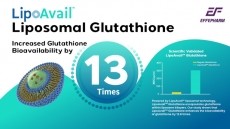White flesh fruits can cut stroke risk 52%: 10-year study

A team of Dutch researchers followed 20,069 Dutch heart disease-free adults with an average age of 41 years for 10 years and found white flesh fruits – rich in the flavonoid quercetin – were better than green, orange/yellow and red/purple fruits for reducing the likelihood of stroke events.
"To prevent stroke, it may be useful to consume considerable amounts of white fruits and vegetables," said lead author Linda M Oude Griep, M.Sc, a postdoctoral fellow in human nutrition at Wageningen Uninversity.
"For example, eating one apple a day is an easy way to increase white fruits and vegetable intake. However, other fruits and vegetable color groups may protect against other chronic diseases. Therefore, it remains of importance to consume a lot of fruits and vegetables."
Down by half
In the 10-year study period, 233 strokes were documented, with stroke incidence 52% lower among those with high white flesh fruit consumption, of which 55% were apples and pears, according to the surveys filled out by respondents to the study.
Bananas, cauliflower, chicory and cucumber were other foods in the white flesh category.
They found 25g per day increase in white fruits and vegetables was linked to a 9% lower risk of stroke while no links were detected between green (dark leafy vegetables, cabbages and lettuces) orange/yellow (mostly citrus fruits) or red/purple (cherries, grapes and strawberries) fruits and vegetables.
The researchers said the results stood despite the difficulty in separating fruit and vegetable intake from other food intakes.
“We adjusted for potential risk factors as well as for important food groups; nevertheless, we cannot rule out the possibility of residual confounding. However, after adjustment for these confounders, we found similar results in both men and women. This argues against residual confounding, because in men, fruit and vegetable intake is less strongly related to healthy behavior.”
Winter and summer consumption of fruits and vegetables were assessed separately by the researchers to account for seasonal variation.
The largest contributors to total fruit and vegetable consumption were white (36%) and orange/yellow (29%) fruits and vegetables. The most commonly consumed white fruits and vegetables were hard fruits (55%).
They called for further studies to validate the findings.
Source:
Stroke: Journal of the American Heart Association
DOI : 10.1161/STROKEAHA.110.611152
‘Colors of Fruit and Vegetables and 10-Year Incidence of Stroke’
Authors: Linda M. Oude Griep, W. M. Monique Verschuren, Daan Kromhout, Marga C. Ocké, Johanna M. Geleijnse.















